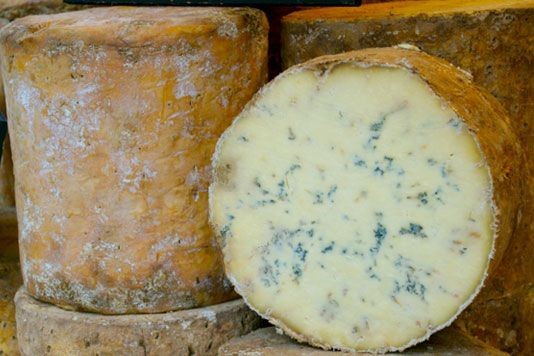
The King Of Cheese
Stilton is produced only in the three English counties of Derbyshire, Leicestershire, and Nottinghamshire. There are just six dairies licensed to make cheese according to a strict code, that may be called “Stilton”. It comes in two varieties: the well-known blue and the lesser-known white. Both have been granted the status of a protected designation of origin by the European Commission. Ironically, this means that Stilton cheese cannot legally be made in the village that gave the cheese its name through its sales.
The pioneer of blue Stilton was Cooper Thornhill, owner of the Bell Inn on the Great North Road in the village of Stilton in Cambridgeshire. In 1730, Thornhill discovered a distinctive blue cheese while visiting a small farm in rural Liecestershire. He fell in love with the cheese and forged a business arrangement that granted the Bell Inn exclusive marketing rights to blue Stilton. Soon thereafter, wagon loads of cheese were being delivered to the inn. Since the main stagecoach routes from London to Northern England passed through the village of Stilton he was able to promote the sale of this cheese and the legend of Stilton rapidly spread.
Not just a blue but the descriptive name for a style, Stilton is full flavored with a well defined blue veining. It is buttery in texture, sometimes even a little crumbly but never dry. Rich complex flavour it fills the palate with a hint of straw some fruit.
Do: Serve with a spoon scooped from the round. The perfect utensil is a Stilton Shovel
Dont ( according to Ian ): Spike the cheese and infuse with Port or muscat. It’s the perfect way to ruin two wonderful products “